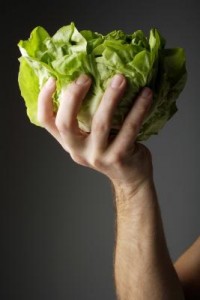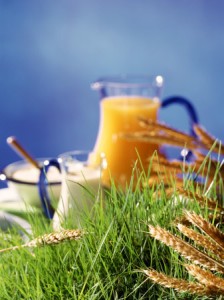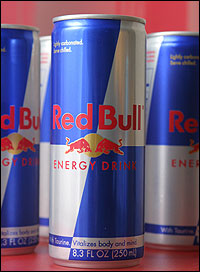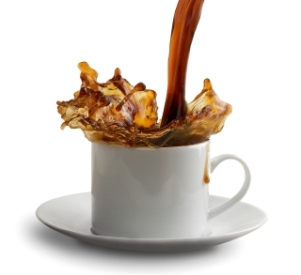
- courtesy of Yahoo! Health
Have you ever noticed that what happens during the morning hours often sets the tone for the rest of the day? When things go smoothly, you tend to feel more relaxed and ready to face whatever the day may bring. However, when things get bumpy before you’ve even managed to get dressed, you’re more likely to remain grumpy until bedtime. While some hassles can’t be avoided, you can make mood-enhancing decisions during the a.m. hours that will set the stage for the next 16 or so. We spoke with the experts and combed the latest research for 10 pick-me-ups that will have your mood rising like the morning sun. Try one (or all!) of them for a happier and healthier you.
1. Pick one “spoil-me” task to do.
When you wake up, give yourself 30 seconds to think of at least one nice thing you can do for yourself that day…and then do it. When Alice Domar, PhD, psychologist and coauthor of Live a Little! Breaking the Rules Won’t Break Your Health, was in Los Angeles for a book tour one winter, she woke up much earlier than usual. But instead of fretting about lost zzz’s, she realized with excitement that she could score some fresh fruit at the nearby farmer’s market, which would’ve been impossible if she were back home in Boston. That impromptu side trip kept her mood lifted throughout the day.
2. Eat a well-balanced meal.
Start your morning with a nutritious mix of complex carbohydrates and proteins that will last you until lunch, such as oatmeal or toast with peanut butter (include a sprinkle of cinnamon, which one study linked to improved mood and alertness, for an extra boost). Other research found that a moderate amount of caffeine (200 mg, or the amount in about two cups of coffee) elevated mood and mental sharpness, so enjoy some joe or black tea with your breakfast.
3. Get some fresh air.
Head out for some “green exercise”—physical activity performed in an outdoor setting—even if you only have a few minutes to spare. Researchers found that people experienced an enhanced mood and higher self-esteem after just five minutes of various types of green exercise, including walking and gardening. The study also found that exercising near water amplified the effects, so if you live near a lake, river or waterfall, even better.
4. Listen to the sounds of nature.
Capture the benefits of the great outdoors, even if you can’t get outside, by listening to recorded nature sounds. In a recent study, participants recovered from a stressful situation more quickly when they listened to a recorded combination of running water and bird sounds. Open your window in the morning so you can hear Mother Nature’s music as you get ready, or invest in an alarm clock that eases you awake with nature sounds.
5. Focus on feeling good.
Right after waking up, Robyn McKay, PhD, a psychologist based in Tempe, Arizona, and founder of the Smart Girl-Modern Goddess coaching program, recommends taking five deep breaths and making the decision to feel good for the day. “Imagine that, even when you encounter frustrations and surprises, you will remember to breathe and respond mindfully—rather than react mindlessly—to your circumstances,” she says. Dr. McKay also suggests that, throughout the day, you “take five deep, intentional breaths and remind yourself of your decision to feel good.”
6. Drink hot chocolate.
A recent study found that sipping a drink containing cocoa flavonols improved participants’ moods and levels of alertness—even as they worked on a series of challenging math problems. So go ahead and savor some hot cocoa made with lowfat or skim milk and dark chocolate. The protein and carbs in the milk will help keep your blood sugar levels stable until lunch, which will help you hold on to your mood momentum.
7. Take a moment to assess yourself.
Don’t jump out of bed right when you open your eyes in the morning. Instead, take five minutes to pay attention to your body and notice if you feel any stiffness, then do some light stretching while breathing deeply, suggests Lynn Louise Wonders, LPC, RPT-S, RYT, a psychotherapist and yoga teacher in Marietta, Georgia. She notes, “Before racing off to the hundred things on the day’s to-do list, it can be tremendously beneficial to claim these five minutes to tune in to your body and your breath. You’ll find that you are more ‘present’ and better equipped to deal with the busyness of the day ahead.”
8. Envision the negative.
You’ve probably heard that gratitude is a mood elevator, but here’s a surprising twist to that tactic: Think about a positive event from your life—how you got your dream job or met your ideal partner, for instance—and then imagine what your life would be like if the event hadn’t happened. Though it seems like this would have the opposite effect, it actually improved the mood of one study’s participants more so than simply thinking of the positive event itself.
9. Breathe in some mint.
Researchers found that sniffing peppermint enhanced mood and attention while also fighting fatigue. Try keeping a bottle of peppermint essential oil or bag of peppermint tea on your nightstand so you can inhale the positive scents right as you wake up. Another happiness helper is chewing gum, which elevated the moods, alertness and attention spans of another study’s participants. Pop a piece of peppermint gum after breakfast for a double-duty perk-up.
10. Smile.
There’s one thing you can do just about anywhere: Smile. “Remember,” says Dr. McKay, “smiling is a simple way to change your mood—and the mood of those around you, too.” So spread your good-mood wealth by baring those pearly whites as often as possible in the morning as well as throughout the day
original article from Yahoo! Health
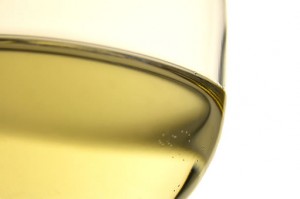 Moderate alcohol consumption may help protect against heart disease, according to two new papers by Canadian researchers.
Moderate alcohol consumption may help protect against heart disease, according to two new papers by Canadian researchers.
